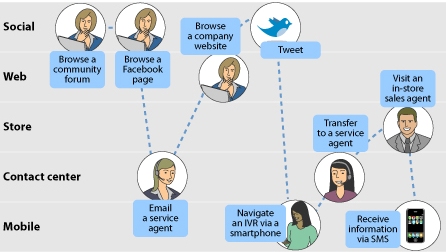Customer Service Done Right In 10 Easy Steps: Step 3
Here’s the third tip in my 10-part blog series on how to master your service experience in order to better align your capabilities with customer demand and do it at a cost that won’t kill your business. Step 3 highlights the need for multichannel integration.
Step 3: Don’t offer silos of communication choices
Your service experience should allow customers to start an interaction in one communication channel and complete it in another. For example, they should be able to start an interaction over the phone and follow up with an email containing more detailed information. Each interaction should convey consistent data and information to the customer. The agents that support each communication channel should follow the same basic processes, like asking for authentication at the same point in the service process. Each interaction should build on the prior one so that the customer does not have to repeat his question each time. This is more difficult to do than it seems, and companies have struggled for years to offer this type of seamless experience.

To allow for this, channels can’t be implemented in silos, but must be integrated so that agents have a full view of prior customer interactions over traditional channels like phone, email, chat, and SMS and social ones like Facebook and Twitter. Agents use this information to understand what conversations the customer has already had with you and can then better personalize the interaction and add value.
It’s interesting to note that, even though companies know this integration is important, Forrester has found that only 10% are doing something about it. Integrations can happen at the technology level or at a much more lightweight business process level that ensures that agents are getting the full view of customers’ prior interactions, even if the interaction channels are not deeply integrated.
Some companies take cross-channel communication a step further. If a customer can’t find the right information via web self-service, he can escalate his question to a chat or email agent. As the customer is supplying additional information, the site runs an under-the-covers search through its knowledge base to locate possible answers. It presents these answers to the customer, who can then decide whether the answer meets his needs or whether he wants to continue to request help from an agent. This experience is designed to keep the customer happy whichever way he chooses to go.
Look at the picture in this post. How many of you let your customers engage with you in the following manner and deliver a consistent, value-added experience at each step of the process?
